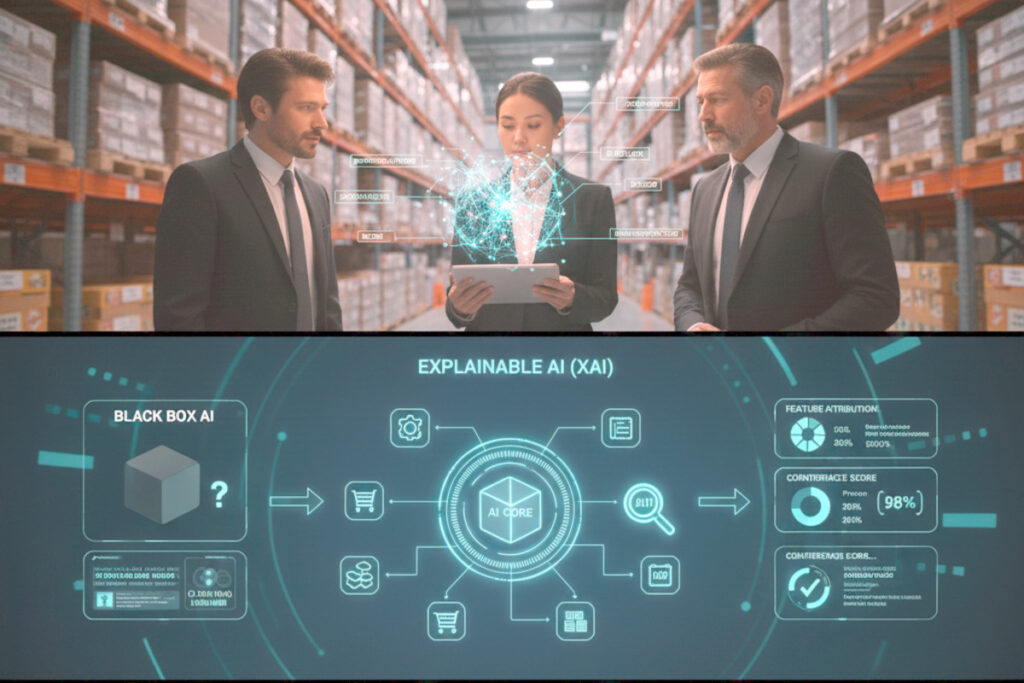We’ve all seen the headlines promising total FMCG automation—a world where algorithms run everything from pricing to procurement. It’s certainly a tantalizing vision, given the breakneck speed of the consumer goods market. But let’s pause and consider what happens when a highly optimized AI spits out a counterintuitive recommendation that could cost millions. Do you just hit ‘execute’ and hope for the best? Probably not. The central tension in advanced Fast-Moving Consumer Goods (FMCG) decision-making isn’t just about speed; it’s about the requirement for human trust and accountability. Traditional “black-box” AI models, which recommend without providing supporting arguments, pose a significant barrier to scaling automation in FMCG, particularly in high-stakes areas such as dynamic pricing or inventory management. That’s why Explainable AI (XAI) isn’t just a technical upgrade; it’s a mandatory design philosophy. XAI exists to empower human decision-makers with timely, transparent insights and actionable recommendations, thereby maximizing the value of automation while maintaining essential human oversight.
The Human-AI Paradox in FMCG Automation
Why can’t we just let the machines run the show? The truth is, whole, unsupervised FMCG logistics automation is often impractical and frankly, downright risky. Algorithms excel at processing vast datasets and identifying patterns we miss. Still, they lack domain expertise—the street smarts, market nuances, unforeseen competitor actions, and ethical judgments that only experienced humans possess. The paradox is that the more powerful the AI becomes, the more mysterious its decisions appear to be. This lack of understanding breeds deep user distrust, which, in turn, is the single biggest impediment to successfully scaling AI adoption across critical operational pillars, such as distribution planning and merchandising. If your category manager doesn’t trust the automated pricing suggestion, they’ll just ignore it, and you’ve gained nothing.
The Cost of the ‘Black Box’ in Retail Decisions
Relying on opaque AI models comes with very real costs. On the tangible side, you face the financial consequences of incorrect forecasts, suboptimal pricing recommendations that erode margins, or supplier conflicts that arise from unexpected scheduling changes. However, the intangible costs are arguably more destructive to organizational culture. These center on user frustration, decision inertia, and the inability to defend a critical business decision. If a manager can’t immediately justify why the system recommended lowering the price of a popular product, how can they defend that action during an internal review? Moreover, in regulated environments, the risk of compliance failure is high when the rationale for a decision cannot be immediately audited or explained to an external body.
XAI Defined: Pillars of Trust and Transparency
Explainable AI is the antidote to the black-box problem. It transforms the AI model’s cryptic output into a comprehensible, auditable business insight. Instead of simply stating, “The price should be $4.99,” the XAI system provides a more nuanced explanation: “The price should be $4.99 because our competitor’s stock is low, local foot traffic increased by 15% yesterday, and the local forecast predicts rain.” This level of detail builds immediate confidence. To truly earn that trust, XAI systems must adhere to specific core principles.
The core pillars required for building trust in automated FMCG decisions are:
- Intelligibility: The ability to understand the mechanism and logic behind the AI’s recommendation.
- Fidelity: The accuracy and consistency of the explanation compared to the model’s actual behavior.
- Fairness: Ensuring the model’s decision-making process is not based on biased or unethical features.
- Actionability: The clarity with which the explanation translates into a specific, executable business change.
Designing for Human Confidence: Features of Explainable Systems
Building XAI that actually works for a busy FMCG warehouse automation manager requires more than good intentions; it requires functional, technical components designed for business users. We need methods to peel back the layers of complexity in machine learning models and present the findings in a format that is immediately understandable.
Feature Attribution: Showing the ‘Why’ in Forecasting
One powerful technique is Feature Attribution. Algorithms like SHAP (Shapley Additive exPlanations) visually isolate and rank the factors that most influenced a specific prediction. For instance, instead of just presenting a final forecast number, the XAI dashboard shows the category manager that the demand spike was driven 60% by a competitor’s stockout, 30% by a planned promotion, and only 10% by regional weather changes. This transparency empowers the human to instantly validate the reasoning behind the forecast, rather than just accepting the output.
Counterfactual Explanations: The ‘What If’ Scenario
The most critical feature for empowering human strategy is the use of Counterfactual Explanations. Every manager asks, “What if?” This capability allows the manager to test alternative strategies against the AI’s internal logic. The system answers the manager’s inevitable question—”What would need to change for the AI to recommend a different action?”—by identifying the minimum required alteration in the input data (e.g., “If you increased your shelf space by 15%, the AI would recommend a price hike instead”). This enables decision-makers to strategically validate and refine automated suggestions before committing capital.

From Insight to Action: Empowering the FMCG Decision-Maker
The final-mile delivery of XAI insight must integrate seamlessly into the daily workflow of inventory, pricing, and logistics teams. This transition transforms passive data consumers into active strategic validators. This is where automation systems for the FMCG industry truly shine.
Decision Confidence Scoring and Auditability
XAI systems aren’t afraid to show their homework. Alongside every recommendation, they provide a Decision Confidence Score, a measure of the AI’s own certainty. A low confidence score signals to the human operator that review is mandatory, demanding their expert intervention. A high score, conversely, facilitates seamless automated decision execution. Critically, every decision, whether automated or human-validated, is accompanied by its underlying explanation, creating a comprehensive audit trail essential for compliance, training, and regulatory oversight.
The New Role of the Human Operator
In this human-centric environment, the job of the human operator undergoes a profound evolutionary shift. They are no longer slow data compilers or reactive auditors, but rather strategic validators, ethical checkpoints, and sophisticated model trainers. Their time is freed from tedious number-crunching to focus on high-value tasks, such as challenging the AI’s assumptions, introducing external qualitative knowledge (like rumors of a competitor’s product quality issues), and acting as the final guarantor of the decision’s compliance and market relevance.
The Future of Human-Centric Automation
We are witnessing the convergence of human intuition and algorithmic speed. The most successful FMCG enterprises won’t be those that achieve complete automation, but those that reach “centaur” performance—the powerful combination of human intuition amplified by algorithmic speed. XAI is the transparent, indispensable partner in this future, acting not as a replacement but as an accelerator for the decision-making process. The goal is to move faster and smarter than the competition, and you can only do that when you trust the intelligence guiding your moves.
Conclusion
The strategic goal is not full automation, but the achievement of confident automation, ensuring that speed is never sacrificed for certainty. The era of the opaque black box is coming to an end, replaced by systems built on the foundation of transparency and accountability. Trust is the ultimate currency of AI, and designing automated systems with humans in the loop is the only sustainable path to leveraging the full, transformative potential of automation in FMCG.








